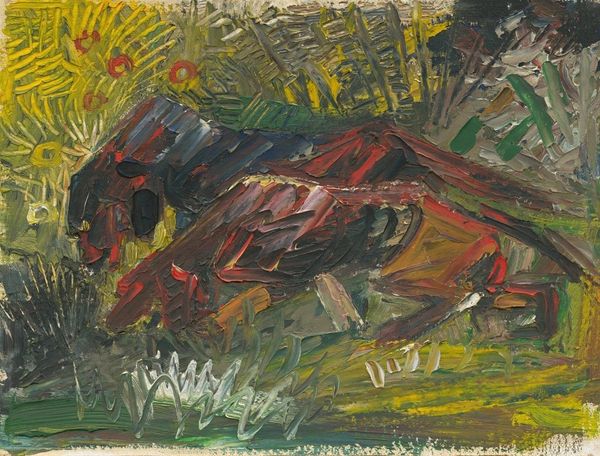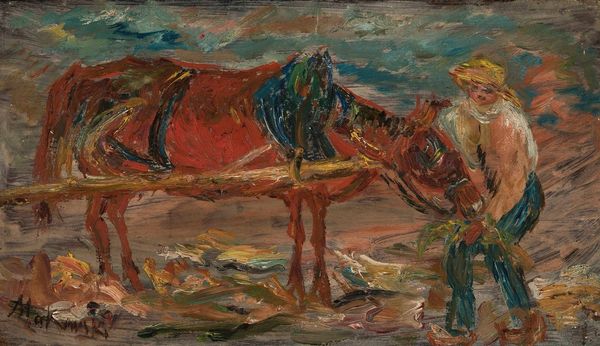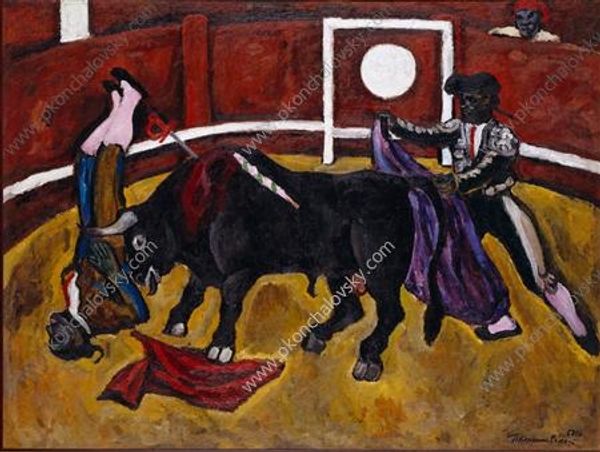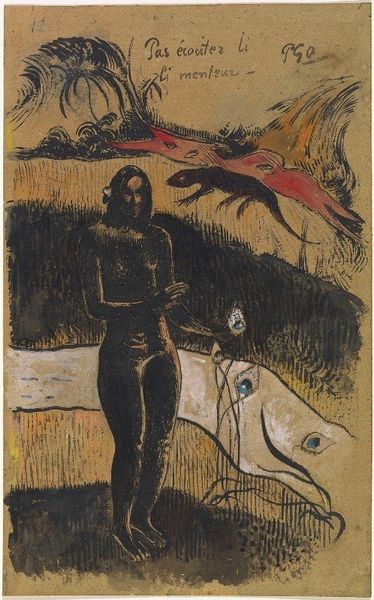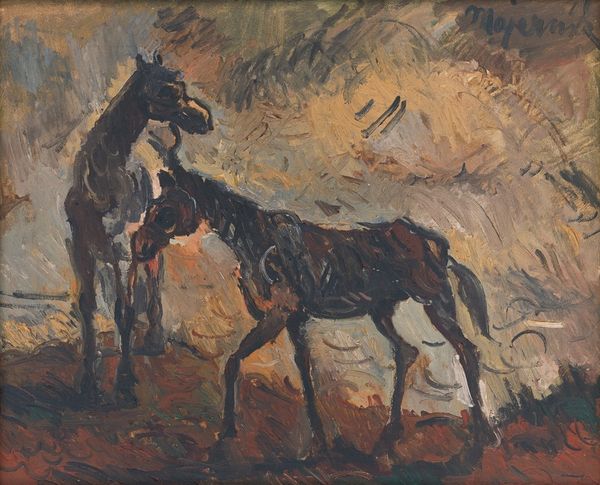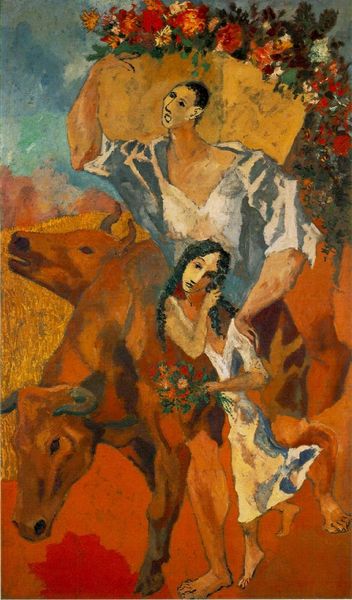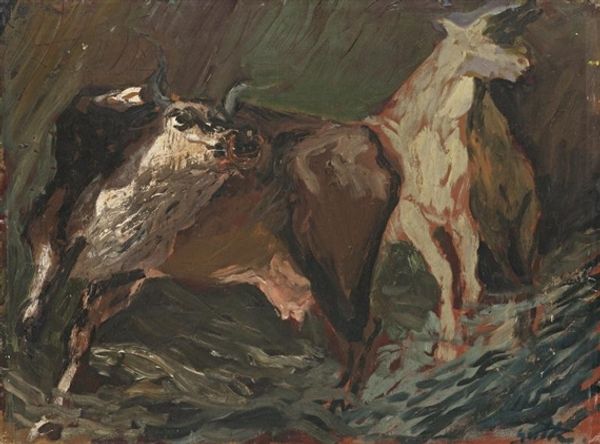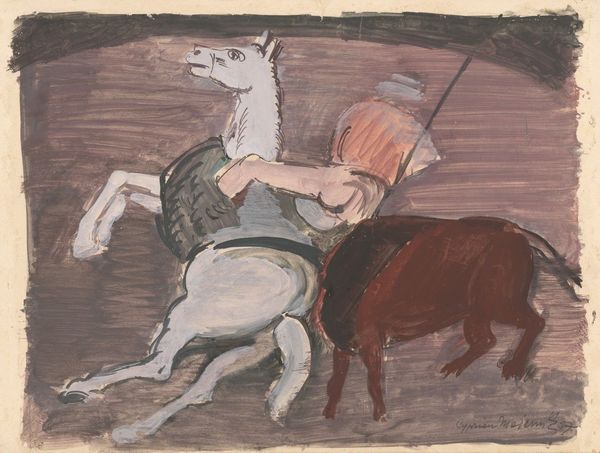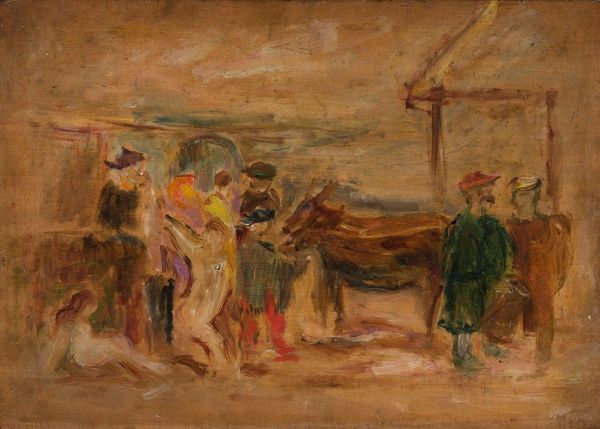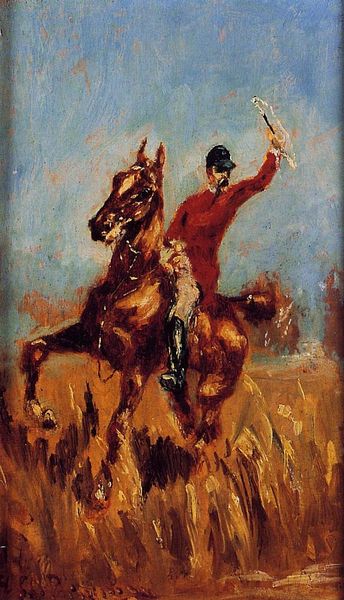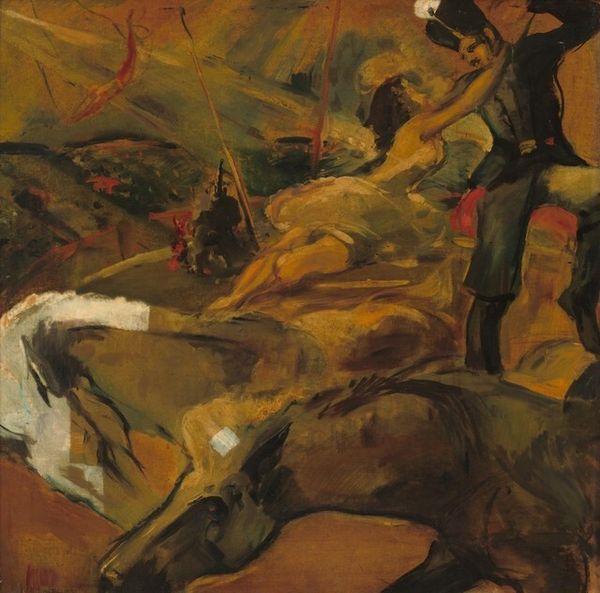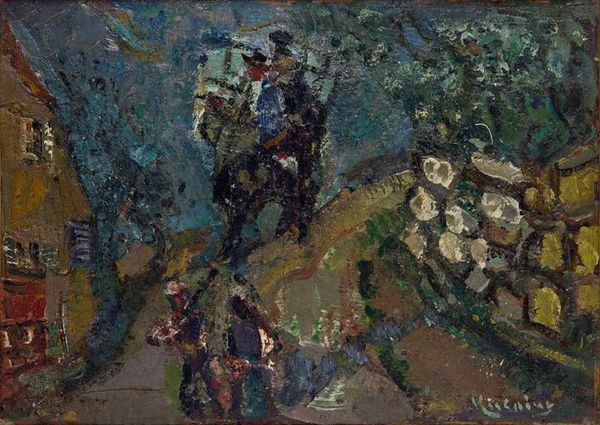
painting, oil-paint, impasto
#
painting
#
oil-paint
#
landscape
#
figuration
#
oil painting
#
impasto
#
expressionism
#
genre-painting
#
expressionist
Dimensions: 42 x 59 cm
Copyright: Public domain US
Curator: Here we have Pyotr Konchalovsky’s “Bullfight. Study.” painted around 1910. He used oil paint in a bold, expressionistic manner. Editor: My immediate reaction is one of dramatic tension. The palette is fiery and turbulent, evoking a sense of primal struggle. Curator: It's compelling to consider this piece within the context of early 20th-century Russia. The bullfight itself is a colonial import. Do you think Konchalovsky might have been exploring themes of cultural conflict or perhaps the violence inherent in spectacle? Editor: An intriguing idea, although I'm more struck by how Konchalovsky orchestrates color and form. Notice the impasto technique: the thickly applied paint builds a sense of palpable energy, almost mirroring the bull’s raw power. The dark bull and the matador form contrasting diagonals that emphasize the dynamics of the painting. Curator: That dynamic reading makes me think about class conflict, too, where the powerful, untamed bull clashes with the human figure—representing either the nobility, or maybe even colonized subjects trying to contain something more unruly than they anticipated. Editor: Interesting thought. However, beyond representation, I read a potent emotional symbolism—an assertion of art's capability to generate responses, even at the cost of a clear narrative. Curator: Exactly. And this raises complex ethical questions for us to ask about the bullfight's inherent violence and its spectators’ position in it. Does the painting normalize this ritual? Editor: It captures conflict without, necessarily, offering an opinion. As a formal study, it lets shapes and movement, rhythm and brushwork, take precedence. Curator: Yes, the painting provides a window into the era's anxieties and contradictions, prompting reflections on cultural power. Editor: And as an important note, one shouldn’t fail to acknowledge Konchalovsky’s use of expressive forms; through these brushstrokes, one can detect his emotional response in ways words could hardly capture.
Comments
No comments
Be the first to comment and join the conversation on the ultimate creative platform.
